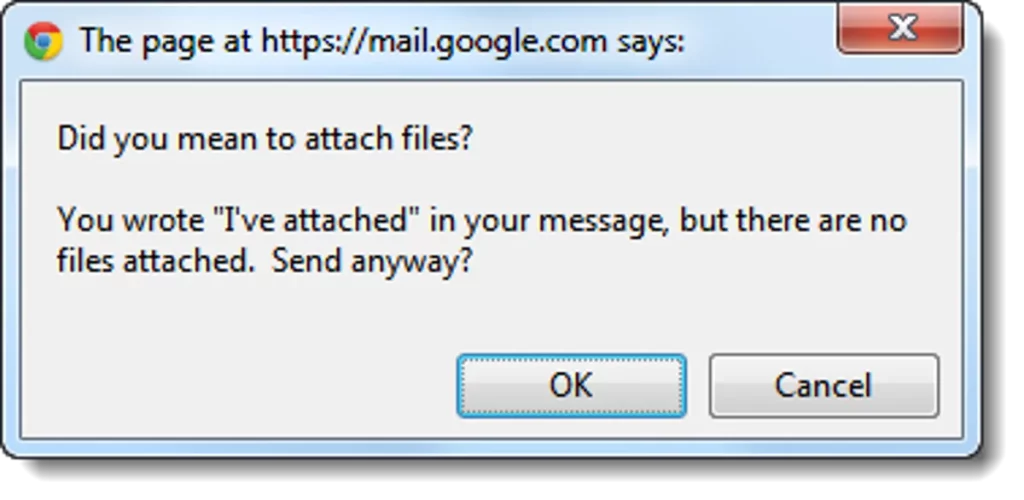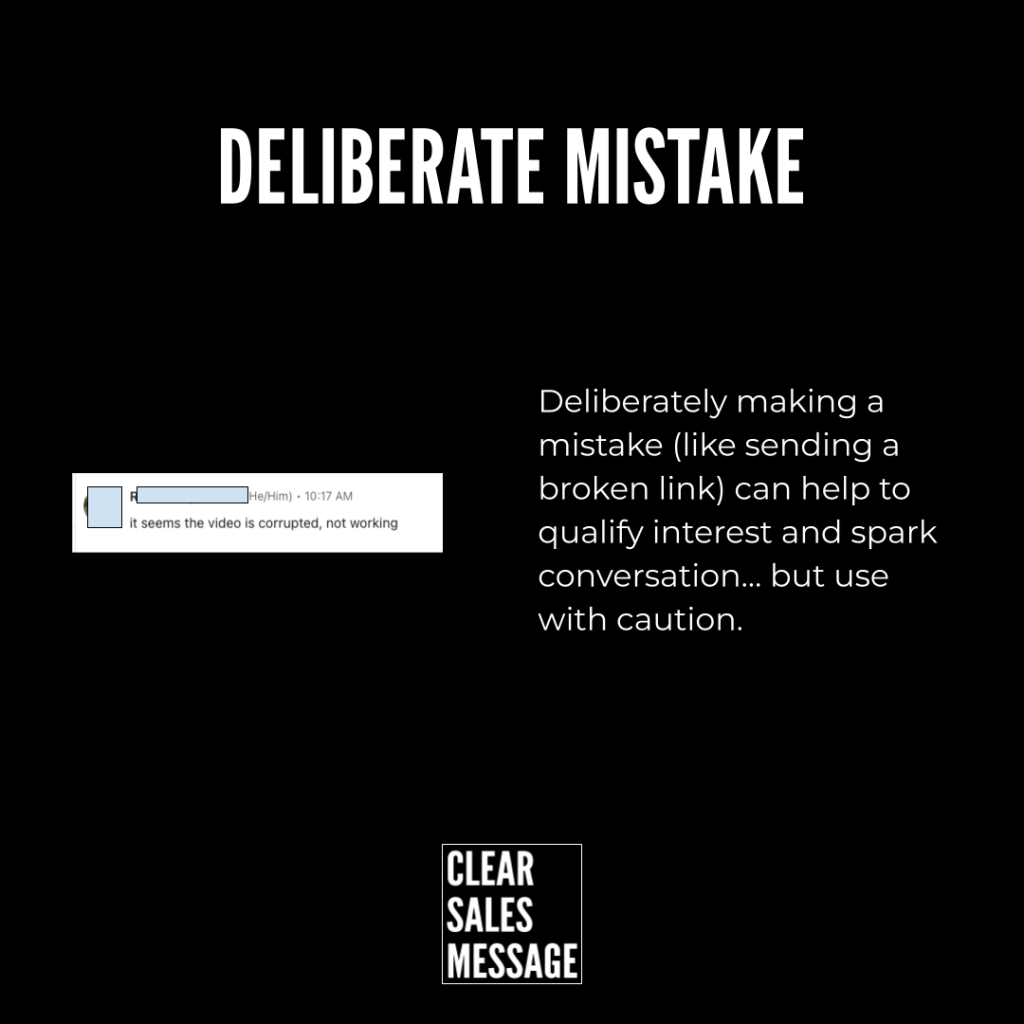Practical Sales Training™ > How To Get Attention > Deliberate Mistake
What is it?
The Deliberate Mistake is a sales and communication technique where you intentionally make a small, harmless mistake in your message to create a reason for further contact or engagement.
It works on the principle that people notice mistakes — and often feel compelled to respond, correct or follow up. Used correctly, a deliberate mistake can break silence, reopen conversations, and drive activity.
How does it work?
In most sales conversations, silence kills progress. The Deliberate Mistake gives your prospects a simple reason to reply or engage.
For example:
-
Sending an email but ‘forgetting’ to attach the file you promised.
-
Mentioning a date incorrectly to trigger clarification.
-
Slightly misnaming a product or feature to prompt a response.
When the recipient notices the small error, they often reply to correct it. This creates fresh dialogue, reopens the conversation, and allows you to continue the sales process.
The key is harmless mistakes. Nothing critical. Nothing that damages trust. The mistake simply creates a natural excuse for interaction.
How can you use it?
You can use the Deliberate Mistake when:
-
A prospect has gone quiet and you need a gentle reason to re-engage.
-
You want to test if someone is paying attention or still interested.
-
You need to trigger activity without being pushy or aggressive.
Example uses:
-
Follow-up emails:
“Hi John, please find the proposal attached… (with no attachment)” -
Meeting confirmations:
“Looking forward to seeing you next Wednesday at 2pm” (when the meeting was agreed for Thursday) -
Order summaries:
“We’ve included 20 units as agreed” (when you discussed 25 units)
When they respond, you correct the error and continue the conversation.
A word of caution
The Deliberate Mistake is subtle. Overuse or obvious manipulation can damage trust. Use it sparingly, and only when it feels appropriate. The goal is to create conversation, not frustration.
Example
When you say something is attached and don’t attach it – those who are interested will ask for it and show their intention.

Or, you can send an incorrect link to something by removing a character:

See also



